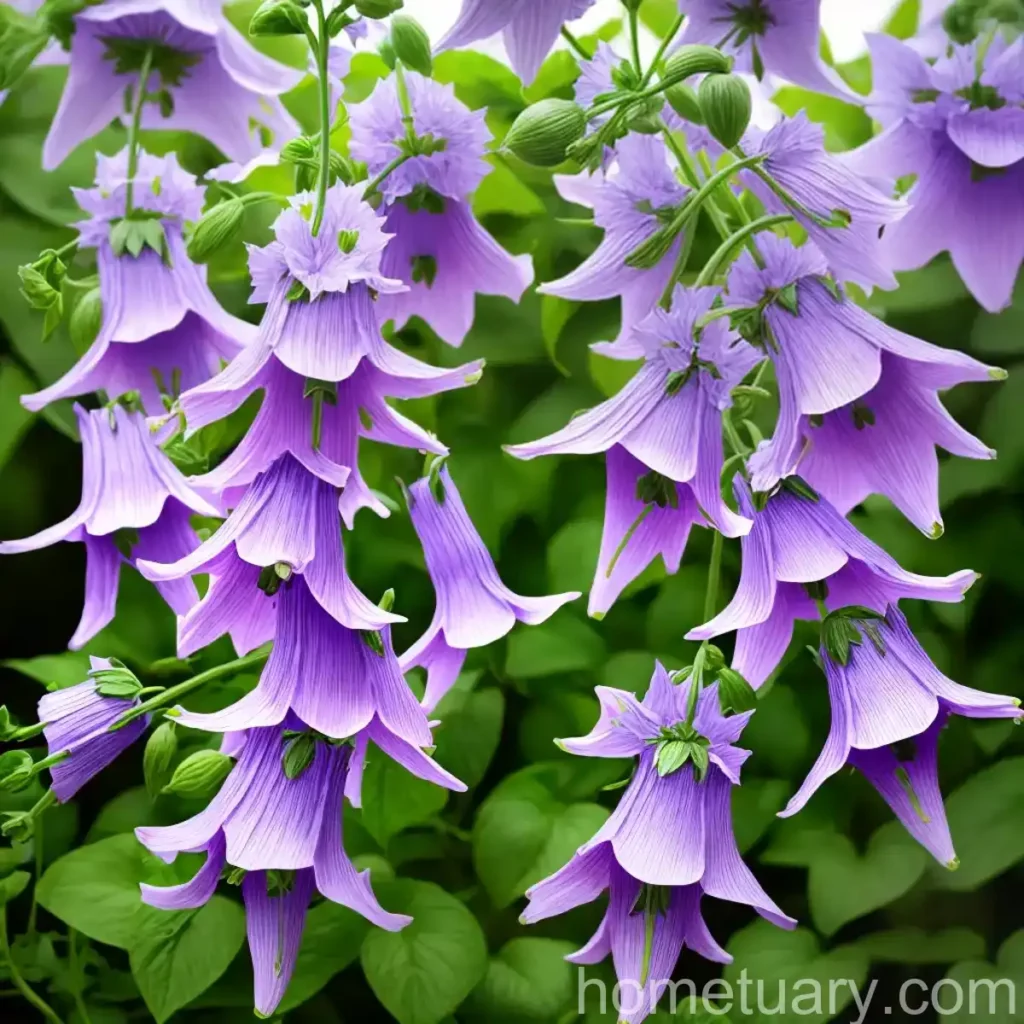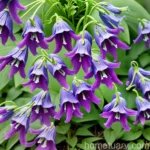The Bellflower (Campanula sarmatica): A Comprehensive Guide to Cultivation and Care
Introduction
Bellflowers, scientifically known as Campanula, are a diverse group of plants that belong to the family Campanulaceae. Among the numerous species within this genus, Campanula sarmatica stands out as an enchanting and versatile plant. In this article, we will delve into the key aspects of Campanula sarmatica, commonly known as the bellflower. From its culture and uses to its care requirements and propagation, this guide aims to provide a comprehensive understanding of this delightful species.
What is the Bellflower (Campanula sarmatica)?
Campanula sarmatica, a member of the Campanulaceae family, is a herbaceous perennial plant indigenous to Eastern Europe and Western Asia. This species is characterized by its upright growth habit and striking bell-shaped flowers, which bloom in clusters atop sturdy stems. The bellflower’s vibrant blossoms, coupled with its adaptability to various growing conditions, make it a favored choice for gardeners looking to introduce color, texture, and pollinator attraction to their landscapes.
Key Takeaways – Bellflower (Campanula sarmatica)
- Bellflower Plant: Campanula sarmatica is an herbaceous perennial plant prized for its bell-shaped, vibrant blossoms.
- Campanula sarmatica: This species is part of the Campanulaceae family and is native to Eastern Europe and Western Asia.
- Growing Bellflowers: Being adaptable to various conditions, it is widely cultivated for its ornamental value.
- Bellflower Gardening Tips: Adequate sunlight, well-draining soil, and regular watering are essential for the successful cultivation of Campanula sarmatica.
- Bellflower Plant Diseases: While generally robust, the plant may be susceptible to certain diseases, necessitating preventive measures.
Culture
Understanding the cultural requirements of Campanula sarmatica is pivotal for ensuring its optimal growth and development. From soil preferences to pruning techniques, each aspect plays a critical role in shaping the overall health and appearance of the bellflower plant.
Uses
Campanula sarmatica serves a multitude of purposes in various settings, ranging from home gardens to public landscapes.
- Ornamental Value: The bell-shaped flowers of Campanula sarmatica add aesthetic appeal to gardens, making it a popular choice for ornamental cultivation.
- Pollinator Attraction: Its nectar-rich blooms entice pollinators such as bees and butterflies, contributing to the overall biodiversity of the surrounding ecosystem.
Water
Proper watering is fundamental for the health and vitality of Campanula sarmatica. Understanding its water needs and implementing an appropriate watering regimen is essential to prevent issues stemming from overhydration or drought stress.
- Water Needs: Campanula sarmatica thrives in well-drained soil and benefits from moderate watering. It is important to avoid waterlogging the soil, which can lead to root rot.
Sunlight
The bellflower plant’s sunlight requirements directly impact its growth, flowering, and overall vigor. Adequate exposure to sunlight is crucial for ensuring the plant’s optimal performance.
- Sun Exposure: Campanula sarmatica flourishes in partial to full sunlight, requiring at least 6 hours of direct sunlight each day for prolific flowering and robust growth.
Fertilizer
Supplemental fertilization can aid in enhancing the overall health and vigor of Campanula sarmatica. However, a balanced approach and an understanding of the plant’s specific nutritional needs are paramount for successful fertilization.
- Fertilization: Applying a balanced, all-purpose fertilizer in spring can provide the necessary nutrients for Campanula sarmatica to thrive.
Soil
The composition and quality of the soil directly influence the growth and development of Campanula sarmatica. Understanding the plant’s soil preferences enables gardeners to create an optimal growing environment.
- Soil Requirements: Well-draining, loamy soil with a slightly acidic to neutral pH range is ideal for cultivating Campanula sarmatica.
Pruning
Regular pruning not only maintains the desired shape and size of the bellflower plant but also promotes flowering and reduces the risk of disease and pest infestations.
- Pruning: Deadheading spent blooms and trimming back leggy growth can encourage the continuous production of flowers and improve the overall appearance of Campanula sarmatica.
Propagation
Propagating Campanula sarmatica allows for the expansion of its presence in the garden or landscape, enabling gardeners to propagate new plants from established ones.
- Propagation: Campanula sarmatica can be propagated through division or from seeds, each method offering its own unique set of benefits and challenges.
Container
Growing Campanula sarmatica in containers is a viable option for individuals with limited garden space or those seeking to showcase the plant in a more controlled setting, such as on patios or balconies.
- Container Gardening: Choosing a well-draining potting mix and providing adequate drainage is crucial for successful container cultivation of Campanula sarmatica.
Popularity
The popularity of Campanula sarmatica as an ornamental plant stems from its captivating appearance, versatility, and relatively low maintenance requirements. Its widespread cultivation in home gardens, public parks, and commercial landscapes underscores its enduring appeal among gardening enthusiasts.
Common Diseases
While Campanula sarmatica is generally resilient, it can be susceptible to certain diseases that have the potential to impede its growth and vitality. Identifying and addressing these diseases is imperative for maintaining the plant’s overall health.
Disease Diagnosis
Recognizing the symptoms and signs of common diseases afflicting Campanula sarmatica is crucial for implementing timely interventions and preventing the spread of the ailments.
- Disease Identification: Common diseases affecting Campanula sarmatica include powdery mildew, rust, and crown rot, each exhibiting distinct symptoms that aid in their diagnosis.
Common Pests
Pest infestations can pose significant challenges to the successful cultivation of Campanula sarmatica, necessitating vigilant monitoring and appropriate pest management measures.
Botanist’s Tips
Seasoned botanists and gardening experts offer valuable insights and tips on cultivating and caring for Campanula sarmatica, drawn from their extensive experience and expertise.
Fun Facts
Uncovering intriguing and little-known facts about Campanula sarmatica adds an element of fascination and discovery to the overall gardening experience, deepening appreciation for this captivating species.
Links to External Resources
For further information and in-depth insights into Campanula sarmatica, the following external resources offer valuable perspectives and comprehensive guidance on various aspects of its cultivation and care.
Conclusion
Cumpanula sarmatica, with its resplendent blooms and adaptable nature, holds a special place in the realm of ornamental plants. Understanding its cultural requirements, from soil and water needs to sunlight and fertilization, is key to fostering its health and vitality. Moreover, by familiarizing oneself with the common diseases and pests that can affect the bellflower plant, one can take proactive measures to preserve its well-being. As a symbol of beauty and resilience, Campanula sarmatica continues to enchant and inspire gardeners and enthusiasts, perpetuating its timeless allure in gardens and landscapes across the world.
Incorporating the insights and guidance presented in this comprehensive guide can empower individuals to cultivate and care for Campanula sarmatica with confidence and proficiency. By embracing the multifaceted aspects of its growth and tending to its specific needs, one can savor the visual splendor and vitality that Campanula sarmatica brings to any outdoor setting.
References:
- Royal Horticultural Society. (n.d.). Campanula. Link
- Missouri Botanical Garden. (n.d.). Campanula. Link
- The National Gardening Association. (n.d.). Campanula. Link
- Gardening Know How. (2021). Growing Bellflowers: Tips For The Care Of Bellflowers. Link
- The Spruce. (2020). How to Grow and Care for Bellflower Plants. Link
- University of Vermont Extension Department of Plant and Soil Science. (n.d.). Growing Bellflowers (Campanula). Link















